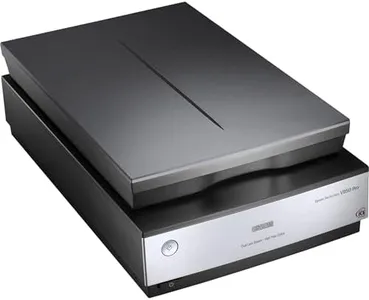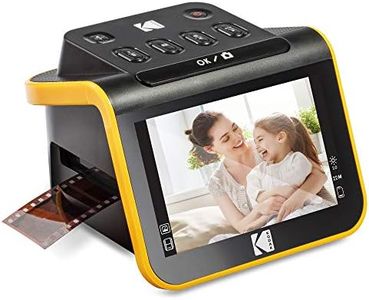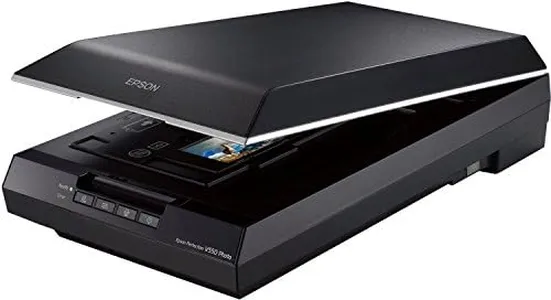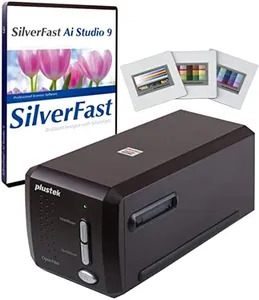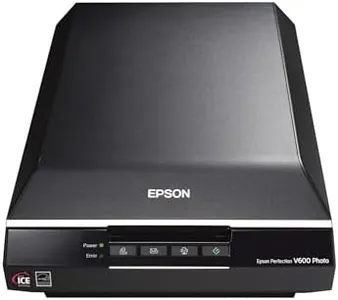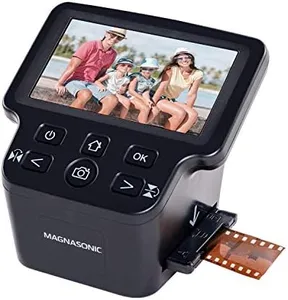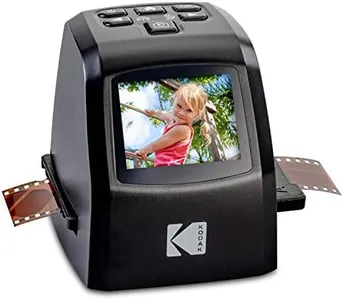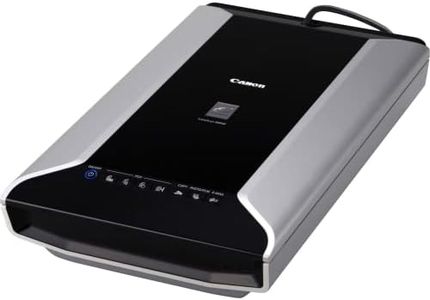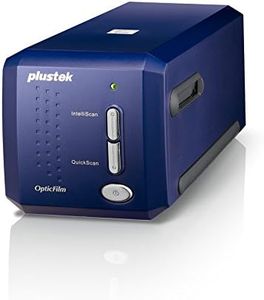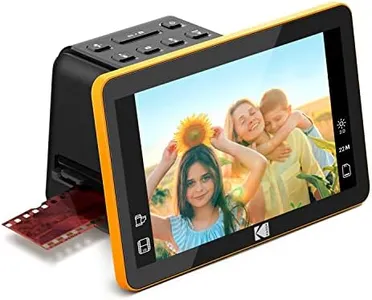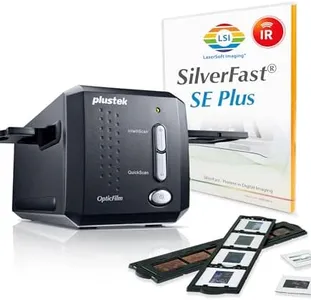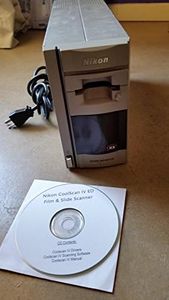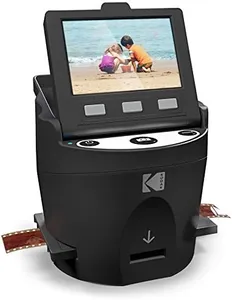10 Best Film Negative Scanners 2025 in the United States
Our technology thoroughly searches through the online shopping world, reviewing hundreds of sites. We then process and analyze this information, updating in real-time to bring you the latest top-rated products. This way, you always get the best and most current options available.

Our Top Picks
Winner
Epson Perfection V850 Pro scanner
Most important from
479 reviews
The Epson Perfection V850 Pro scanner is a high-quality device specifically designed for film-negative scanning. It boasts an impressive resolution of 6400 dpi, which ensures incredibly detailed scans. This level of resolution is ideal for professional photographers and enthusiasts who demand high precision in their scanned images.
Another standout feature is its 4.0 Dmax dynamic range, which allows for excellent gradations and fine shadow details, making it suitable for capturing the subtleties in film negatives. The scanner's dual lens system further enhances image quality by selecting the optimal lens for each scan, ensuring the best possible results. It supports a wide range of operating systems, including various versions of Windows and Mac OS X, making it versatile and accessible to a broad audience.
The scanner is relatively bulky and heavy, weighing 20.9 pounds and measuring 12.1 x 19.8 x 6 inches, which could be a drawback for users with limited space. Additionally, it utilizes USB connectivity, which is standard but may not offer the fastest transfer speeds compared to newer technologies. The software and features included with the scanner are designed to facilitate high-quality scans, although some users might find the setup process a bit complex. Despite these minor inconveniences, the Epson Perfection V850 Pro is best suited for professionals and serious hobbyists who need detailed and high-quality scans of film negatives.
Most important from
479 reviews
KODAK Slide N SCAN Film & Slide Scanner Digitizer with 5” LCD Screen, Quickly Convert Negatives & Slides to Digital 22MP JPEG Photos, Compatible with 135, 126 and 110 Film & Slides
Most important from
11482 reviews
The Kodak Slide N Scan Film and Slide Scanner is designed to help you preserve old photo memories by converting color and black & white negatives and slides into high-resolution digital files. With a resolution of 22 megapixels, it delivers clear and detailed images, making it suitable for most users who want to digitize their film collection. The large 5-inch LCD screen provides a convenient way to preview and edit photos, which is great for sharing with friends and family or using as a digital picture frame.
The scanner supports various film sizes including 35mm, 126, and 110 negatives and slides, making it versatile for different types of film media. Additionally, its easy-load film inserts and quick-feeding tray technology simplify the scanning process, allowing for efficient and continuous operation. The device also includes basic editing features with a single touch, such as adjusting color and brightness, which are user-friendly especially for those who are not tech-savvy.
It supports SD and SDHC cards up to 32GB, but these are not included, which might be an inconvenience for some users. Connectivity options like USB and HDMI provide flexibility in transferring scanned images to computers or viewing them on larger screens. The Kodak Slide N Scan is a solid choice for anyone looking to digitize their old film negatives and slides with minimal hassle.
Most important from
11482 reviews
Epson Perfection V550 Color Photo, Image, Film, Negative & Document Scanner with 6400 DPI Optical Resolution
Most important from
1411 reviews
The Epson Perfection V550 is a versatile scanner that works well for anyone looking to digitize 35mm negatives, slides, photos, and documents. With a high optical resolution of 6400 dpi, it can capture detailed images that are good enough for large prints up to 17 x 22 inches. Its 48-bit color depth helps produce rich, true-to-life colors, which is great if you want accurate and vibrant scans. The scanner includes a built-in transparency unit for film scanning and supports various film types, making it suitable for hobbyists and casual users who want to archive old negatives and slides.
One of its strong points is the Digital ICE technology, which reduces dust and scratches automatically, saving time on manual photo restoration. It also features an easy photo fix option to enhance faded images with one click, which can be handy for users without photo editing experience. Scan speed is decent due to ReadyScan LED technology, which means no warm-up time and quicker results. The scanner can handle multiple photos at once with auto edge detection, cropping each image separately, improving workflow efficiency.
On the software side, it includes ABBYY FineReader OCR to convert scanned documents into editable text, adding extra value if you also scan documents. However, connectivity is limited to USB 2.0, which is slower compared to newer standards, and the device is somewhat bulky and heavier compared to portable models. While it performs well for 35mm film, it may not be the best choice for professional or high-volume film scanning due to its modest dynamic range and older release date. The Epson Perfection V550 is a solid option for home users and photo enthusiasts looking to digitize their 35mm film and photos with good detail and color quality, along with useful restoration features. It offers strong value for its price and features, though it is less suited for professionals needing faster or higher-end capabilities.
Most important from
1411 reviews
Buying Guide for the Best Film Negative Scanners
Choosing the right film-negative scanner can be a bit overwhelming, but understanding the key specifications can help you make an informed decision. A film-negative scanner is a device that converts film negatives into digital images, allowing you to preserve and share your memories in a modern format. When selecting a scanner, consider what you need it for, such as the level of detail you want to capture, the types of film you have, and how you plan to use the digital images. Here are some key specifications to consider and how to navigate them.FAQ
Most Popular Categories Right Now
